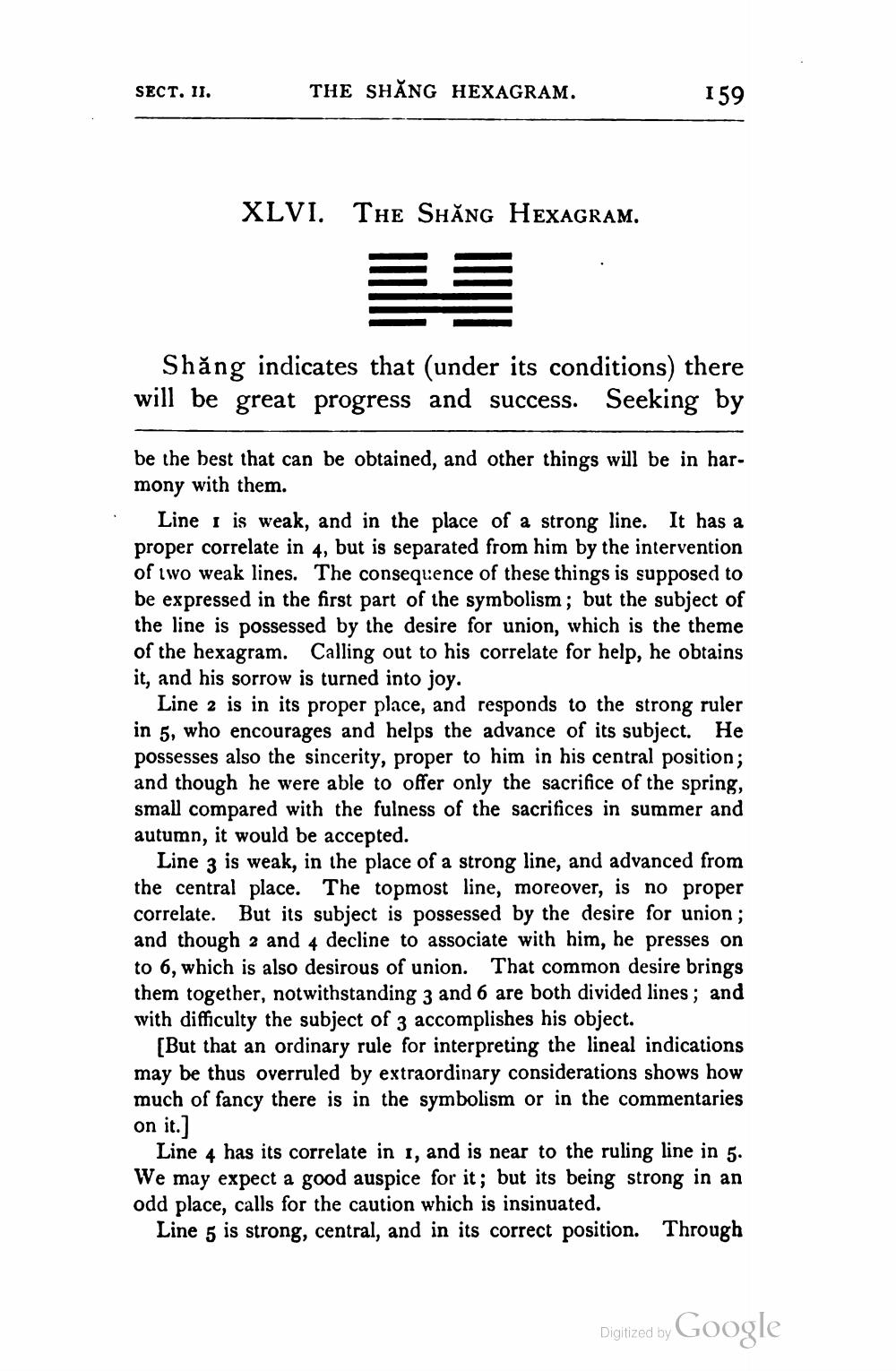________________
SECT. II.
THE SHANG HEXAGRAM.
159
XLVI. THE SHĂNG Hexagram.
Shăng indicates that (under its conditions) there will be great progress and success. Seeking by
be the best that can be obtained, and other things will be in harmony with them.
Line 1 is weak, and in the place of a strong line. It has a proper correlate in 4, but is separated from him by the intervention of two weak lines. The consequence of these things is supposed to be expressed in the first part of the symbolism ; but the subject of the line is possessed by the desire for union, which is the theme of the hexagram. Calling out to his correlate for help, he obtains it, and his sorrow is turned into joy.
Line 2 is in its proper place, and responds to the strong ruler in 5, who encourages and helps the advance of its subject. He possesses also the sincerity, proper to him in his central position; and though he were able to offer only the sacrifice of the spring, small compared with the fulness of the sacrifices in summer and autumn, it would be accepted.
Line 3 is weak, in the place of a strong line, and advanced from the central place. The topmost line, moreover, is no proper correlate. But its subject is possessed by the desire for union; and though 2 and 4 decline to associate with him, he presses on to 6, which is also desirous of union. That common desire brings them together, notwithstanding 3 and 6 are both divided lines; and with difficulty the subject of 3 accomplishes his object.
(But that an ordinary rule for interpreting the lineal indications may be thus overruled by extraordinary considerations shows how much of fancy there is in the symbolism or in the commentaries on it.]
Line 4 has its correlate in 1, and is near to the ruling line in 5. We may expect a good auspice for it; but its being strong in an odd place, calls for the caution which is insinuated.
Line 5 is strong, central, and in its correct position. Through
Digitized by Google




